9 of the best cities and towns for a holiday in Brazil
Glorious coastal cities, modern concrete jungles and delightful colonial towns await
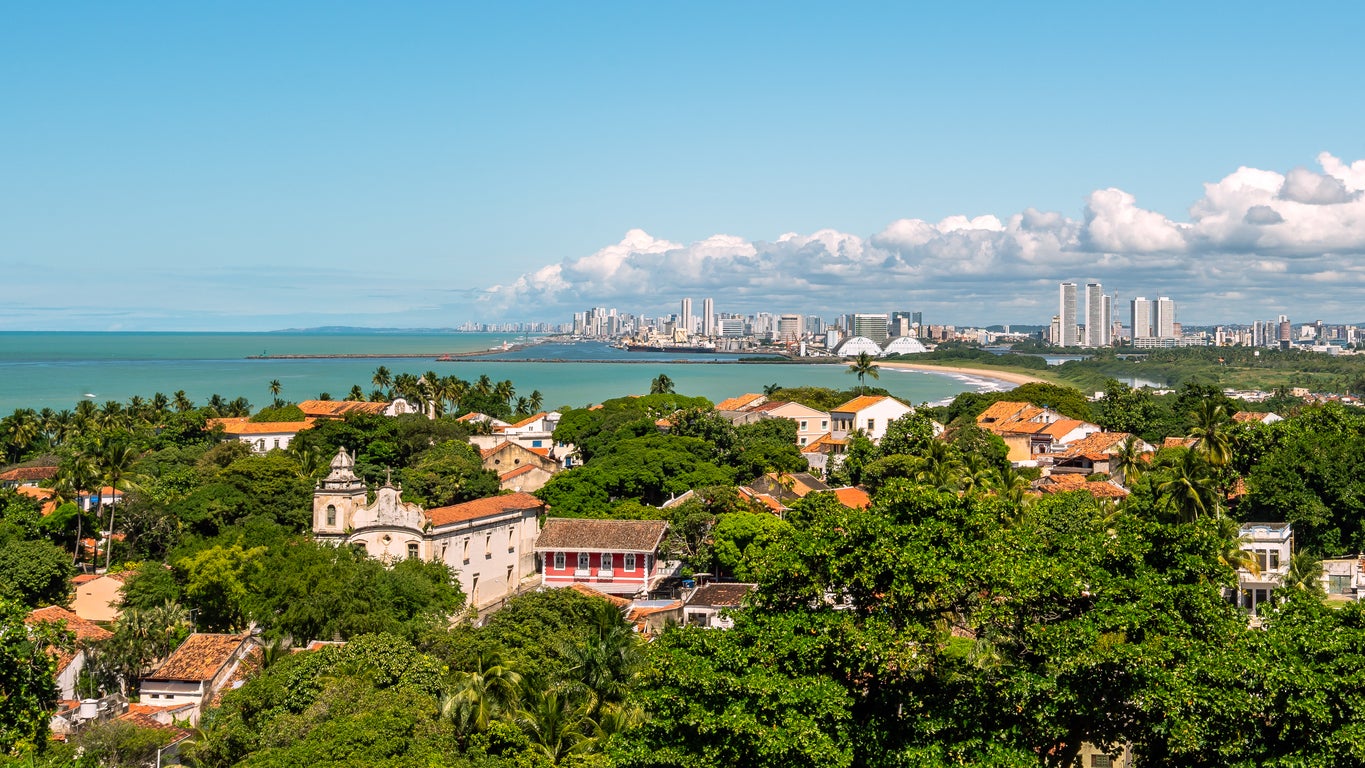
Your support helps us to tell the story
From reproductive rights to climate change to Big Tech, The Independent is on the ground when the story is developing. Whether it's investigating the financials of Elon Musk's pro-Trump PAC or producing our latest documentary, 'The A Word', which shines a light on the American women fighting for reproductive rights, we know how important it is to parse out the facts from the messaging.
At such a critical moment in US history, we need reporters on the ground. Your donation allows us to keep sending journalists to speak to both sides of the story.
The Independent is trusted by Americans across the entire political spectrum. And unlike many other quality news outlets, we choose not to lock Americans out of our reporting and analysis with paywalls. We believe quality journalism should be available to everyone, paid for by those who can afford it.
Your support makes all the difference.Brazil’s range of natural beauty, historic landmarks and sprawling cities rivals almost any other country in the world.
This vast nation has become renowned for its sparkling coastlines and natural landscapes surrounding characterful cities like Rio de Janeiro, but some of its towns and cities remain chronically overlooked.
Rio will continue to grab headlines due to its Carnival celebrations and world-famous landmarks, but other major cities like Sao Paulo and Salvador are catching up, with visitors becoming wise to their wealth of architecture, arts and historic sites.
The capital, Brasilia, is a unique destination due to its avant-garde design, while places like Paraty and Florianopolis welcome those tourists who prefer tropical relaxation over ticking off museums.
Meanwhile, destinations such as Ouro Preto and Olinda are akin to still-standing monuments to colonial times, giving an insight into the country’s fascinating history.
Whether you’re a history buff, beach lover or partygoer, there’s likely somewhere for you in Brazil; we’ve rounded up a list of the best cities and towns to visit.
Sao Paulo

Brazil’s largest city is home to around 20 million people, and in recent times has become one of the continent’s most important cities. Similarly to Rio, Sao Paulo is fronted by long stretches of beach and is home to a welcoming population that make it a vibrant place to visit.
There are some green spaces, including the Ibirapuera Park, a 400-acre oasis that is Sao Paulo’s answer to Central Park, but the only jungle here is a concrete one, with the city characterised by an abundance of skyscrapers. For some of the best views, head to the 161m-high Farol Santander building or the 46-storey Edificio Italia.
Sao Paulo is fiercely proud of its past yet is also cosmopolitan, likely helped by its role as the economic heart of the country. It has a variety of museums and cultural centres – focusing on everything from football to the development of the Portuguese language and Afro-Brazilian history – as well as art galleries containing both modern and Renaissance works.
Where to stay
Situated in the safest part of the city in the Jardins neighbourhood, the Tivoli Mofarrej offers quiet luxury in a modern setting. Rooms are spacious and contemporary, and are complemented by an award-winning spa, outdoor pool area and a Japanese-Brazilian restaurant.
Read more on South America travel:
Rio de Janeiro

The country’s capital until 1960, Rio de Janeiro is often seen as the face of tourism in Brazil. It has become a bucket-list destination, as famed for its welcoming atmosphere as it is for its magnificent natural sites and long stretches of beach.
One of the world’s most picturesque cities, Rio sits on a large bay flanked by golden sands and towering hills. The city has three particularly well-known landmarks: the Christ the Redeemer statue and Sugarloaf Mountain are a must for panoramic views over the city, while an afternoon spent sipping cocktails on Copacabana beach is a great way to get acquainted with the city and its locals.
Away from nature, Rio has plenty more to entice tourists. February’s Carnival celebration is one of the world’s largest parties, while the nightlife of Lapa remains buzzing year-round. The city’s museums showcase Brazilian history, modern art and futuristic science exhibits, while its football teams are among the best on the continent.
Where to stay
For a conveniently located stay on Copacabana, choose the Hotel Astoria Palace. Located near the centre of the famed beach, this modern hotel benefits from a rooftop terrace and pool, with rooms that are minimalist yet stylish.
Brasilia

Brazil’s current capital was conceived as part of a nationwide modernisation project, and has been labelled by Unesco as a “landmark in the history of town planning”.
This purpose-built city is replete with forward-thinking design elements, and several of the most impressive sites are government buildings, from the towers of the National Congress to the Itamaraty Palace, home to the Foreign Ministry.
The city’s cathedral and the Dom Bosco Sanctuary have become two of Brazil’s most iconic religious structures, while the Praca dos Tres Poderes is perhaps the most dramatic location in the city, lined with various monuments and important buildings. All of this combines to give the city a rather retro feel, despite its futuristic design.
The Banco do Brasil cultural centre is the cultural heart of the city, with a varied events programme and two galleries for temporary exhibitions, while the Museu Nacional contains the city’s best art exhibitions. Zonal laws mean most of the green spaces (and more lively nightlife areas) are outside the centre, so visit the city’s ‘National Park’, the Paranoa Lake or the Itiquira municipal park to get back to nature during a visit.
Where to stay
The Melia Brasil 21 is a trendy hotel in the city’s well-developed South Wing area, under two miles from most of Brasilia’s main attractions. Rooms are spacious and functional, with the highlight of the hotel being a large rooftop and pool area with amazing views.
Salvador
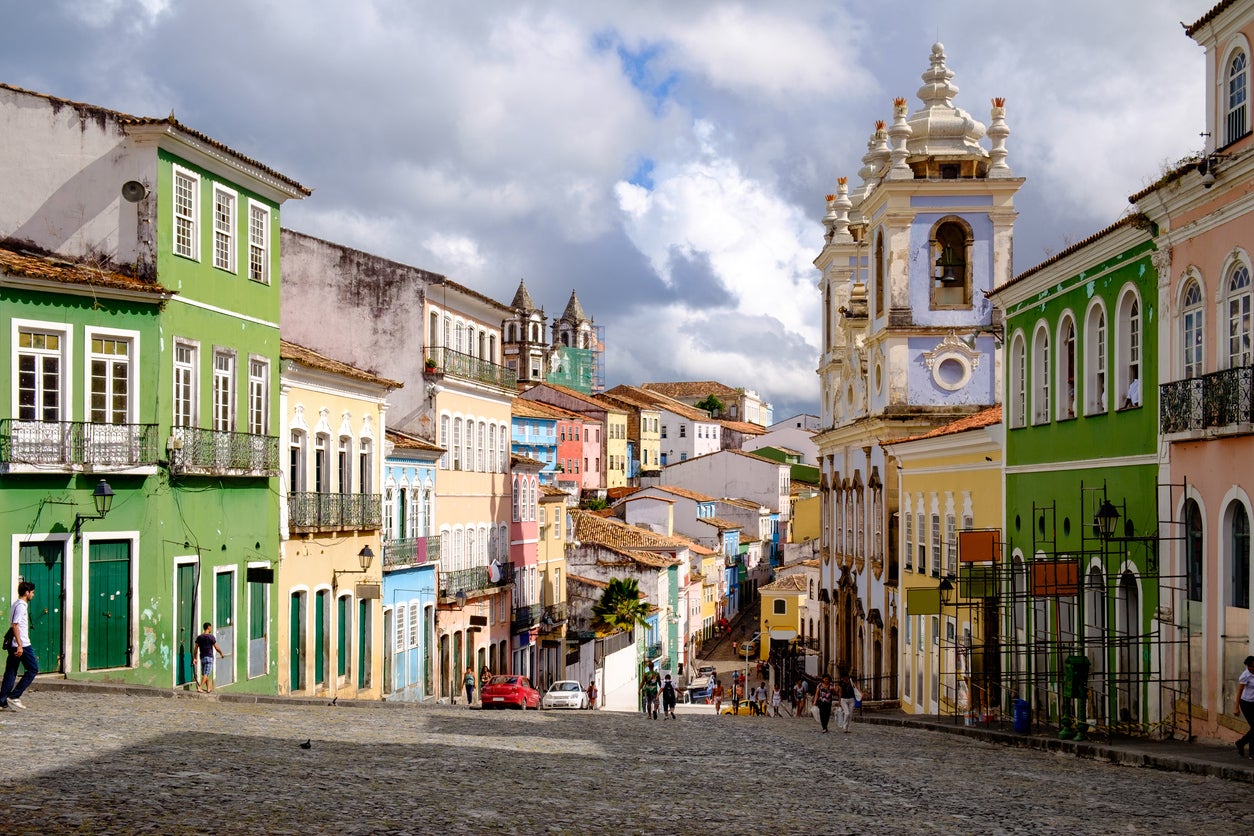
Salvador was once Portugal’s colonial capital, and today parts of the city are characterised by the former empire, from a range of colonial architecture to a vibrant Afro-Brazilian culture. Its beaches and more temperate climate make it a popular tourist destination with Brazilians, with many also visiting for Carnival parties that rival Rio’s in scale.
The city’s architecture is a mix of skyscrapers and colonial buildings, the majority of which are in the historic centre. Known as Pelourinho, this mazy area of cobbled streets is lined with dozens of pastel-coloured structures, and has become Brazil’s centre of Afro-Brazilian culture, home to dance schools, capoeira classes and museums on Afro-Brasileiro history and local archaeology and ethnology. The Largo do Pelourinho square, near the centre of the neighbourhood, is one of the city’s most lively nightlife spots.
Where to stay
The Fera Palace hotel sits close to the coast next to the Pelourinho district, offering easy access to some of the most exciting parts of the city. Its rooms are large, colourful and comfortable, while the decor throughout the hotel is exceedingly stylish, from the bar to the rooftop terrace (which comes with panoramic views over the sea).
Manaus
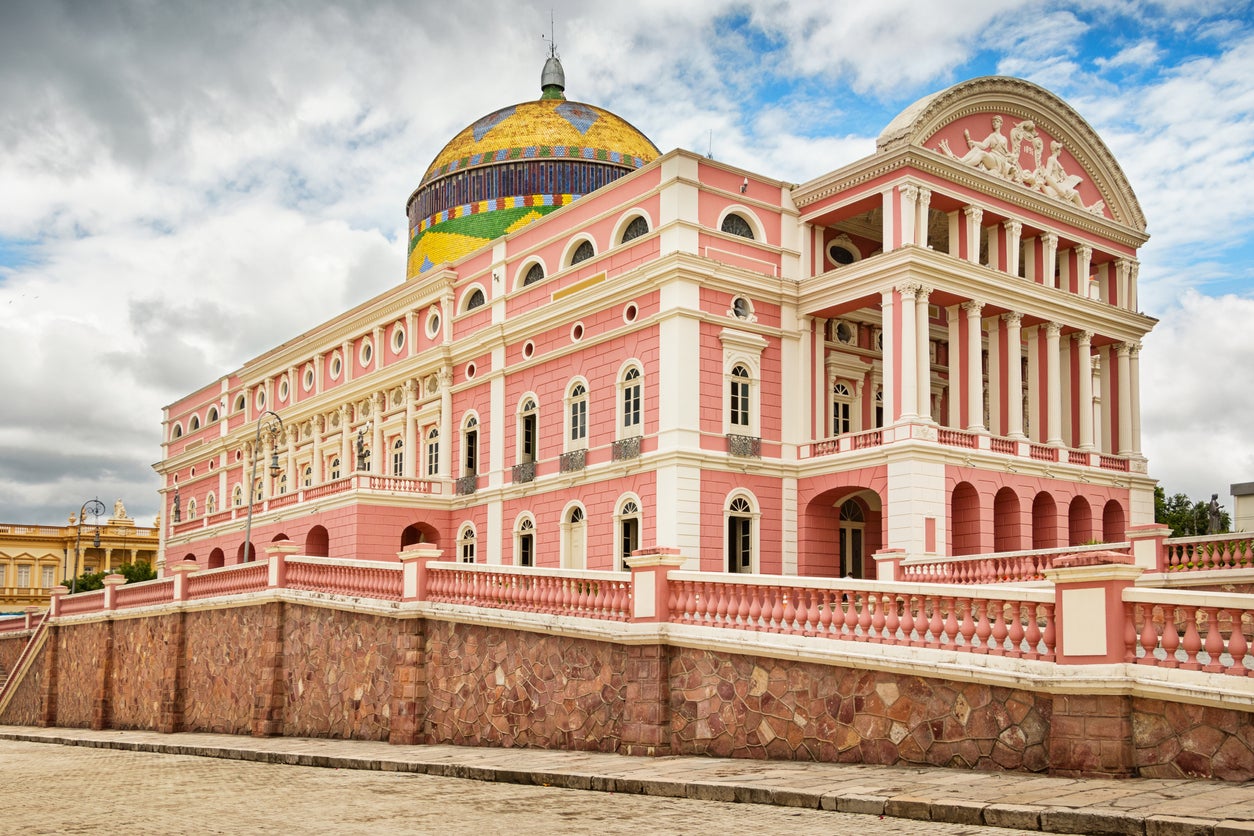
Manaus is just one of two cities in the Amazon – along with Belem – that is home to over one million people. The city is the gateway for the river and rainforest, close to where many tours set off and providing a final bit of civilisation before setting off on an Amazonian adventure.
Unsurprisingly considering its location, Manaus is home to natural beauty such as the nearby ‘Meeting of the Waters’, where the almost black water of the Rio Negro meets the khaki-coloured Rio Solimoes. The 9,000 acres of the Januari Ecological Park offer an intriguing day trip into the Amazon, but for something on the edge of the city, the Adolpho Ducke botanical gardens provide an urban forest that spans over 100 square kilometres.
Manaus itself has plenty more to keep you occupied away from nature. The 19th-century theatre is one of the city’s most impressive landmarks (and hosts several regular theatre and opera shows), while the Museu da Amazonia houses artefacts from around the state and the rainforest area. Take a tour of the Adolfo Lisboa market for the opportunity to buy a souvenir, or relax in an Amazonian beach at Praia da Lua.
Where to stay
The Juma Opera Boutique Hotel is the best option for staying in a central location in Manaus, and includes a terrace overlooking the theatre, a large outdoor pool and elegant interiors.
Recife and Olinda

Recife is one of the northeast’s major tourism hubs, blending a beautiful coastline with a captivating historic centre and a sprawling urban setting. The city’s museums cover modern art, the city’s history and some of the culture of the state (at the Cais do Sertao), while the coast around the city and to the south has some of the best beaches in the state, including Pina, Carneiros and Boa Viagem.
Recife’s old town, known as Recife Antigo, is located on the island and is one of the most picturesque neighbourhoods of any city in Brazil. Like a more grand version of Salvador’s Pelourinho, it is filled with wide cobbled streets, colourful colonial architecture and a slew of bars and restaurants that have made it the city’s socialising centre.
Olinda, which lies around six miles from Recife, is another colonial-era marvel. Almost like a smaller version of Recife Antigo mixed with the white-washed structures of Ouro Preto, it is home to a network of convents, chapels and Baroque churches dotted among the gardens and hillsides.
Where to stay
The Hotel Luzeiros offers guests affordable luxury not far from the beach and major attractions of the city. Rooms are pared-back but stylish – and come with city views – while a terrace and pool offer opportunities to relax when the beach seems too far away.
Ouro Preto

Ouro Preto is located in Minas Gerais, a state known for its mining history and a variety of natural beauty. The city was state capital until it was replaced by nearby Belo Horizonte in 1897.
Once the largest city in South America during the continent’s gold rush, Ouro Preto’s expansion was limited by the hills and creeks surrounding the town. Nowadays, these hills provide attractive scenery, while the lack of expansion means that the town has retained a large amount of its colonial architecture. In the old town, splashes of pastel-hued facades are dotted among a sea of russet-roofed, white-washed buildings.
Ouro Preto is less of a tourist town than other places on this list, but it still has enough to keep even intrepid travellers busy. Several of the mines that once made it so famous are still open, including Veloso, Chico Rei and Passagem, one of the largest in the world open to the public. Several churches and religious buildings still stand too, as well as museums dedicated to subjects including oratory, pharmacy and Brazilian artists.
Where to stay
Situated just outside of the centre of Ouro Preto, the Hotel Recanto do Ouro provides idyllic surroundings for a comfortable stay in this former mining town. It sits among verdant hills and tropical trees, with lodge-style rooms and outdoor areas that provide incredible views over the hills and waterfalls.
Paraty
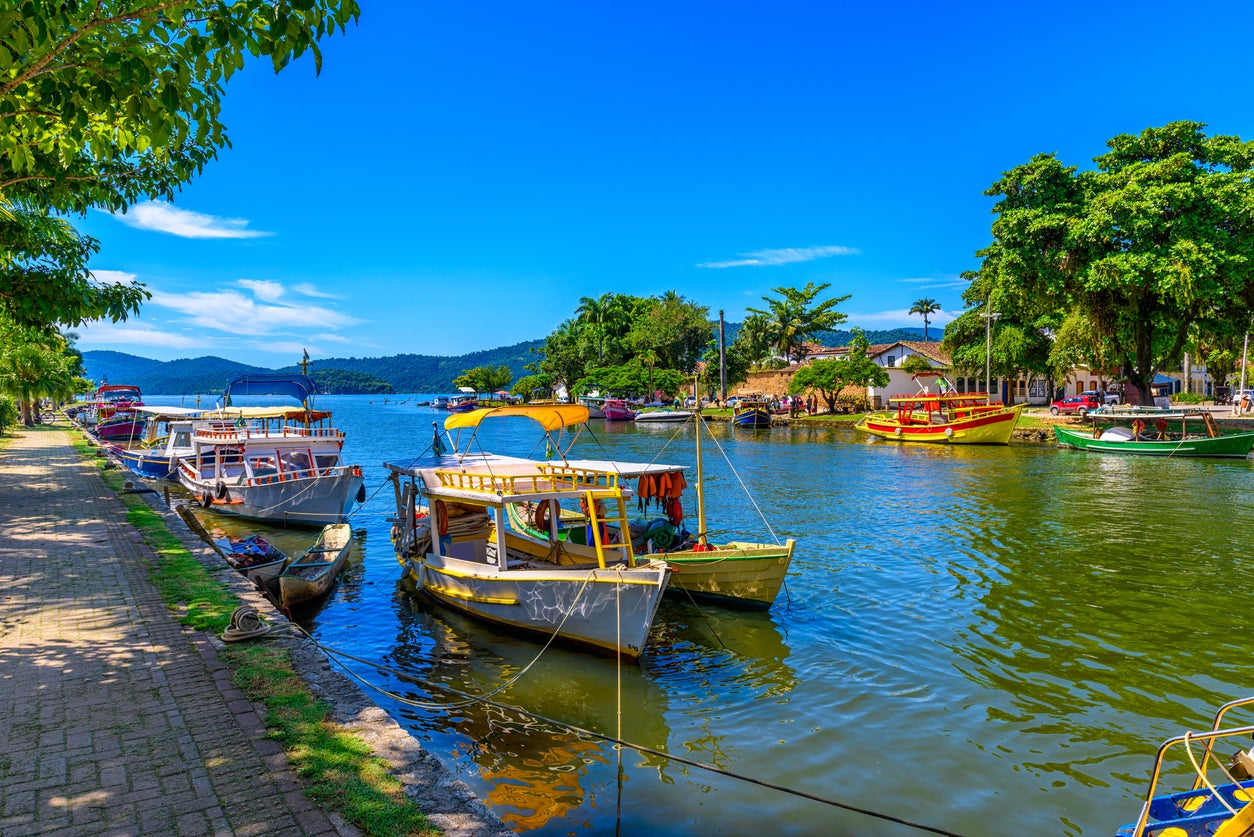
Located around four hours west of Rio de Janeiro, Paraty is a smaller town that has popped up on the tourism radar thanks to a mix of its striking natural setting and well-preserved colonial architecture. It is surrounded by dense jungle, rising hills and tropical islets, and fronted by a series of bays and beaches including Trindade and Paraty-Marim.
The town is a haven for nature lovers, with the nature reserve of Fazenda Bananal and the magnificent Mamangua Bay two of the most distinguished sites. Water sports are popular too, with the potential to kayak around nearby mangroves, alongside tours of cachaca distilleries.
Where to stay
The Pousada Villaggio is a true jungle retreat, set in a colourful villa with pleasant outdoor and pool areas. Rooms are simple and functional, and the location gives you easy access to the centre and beaches.
Florianopolis
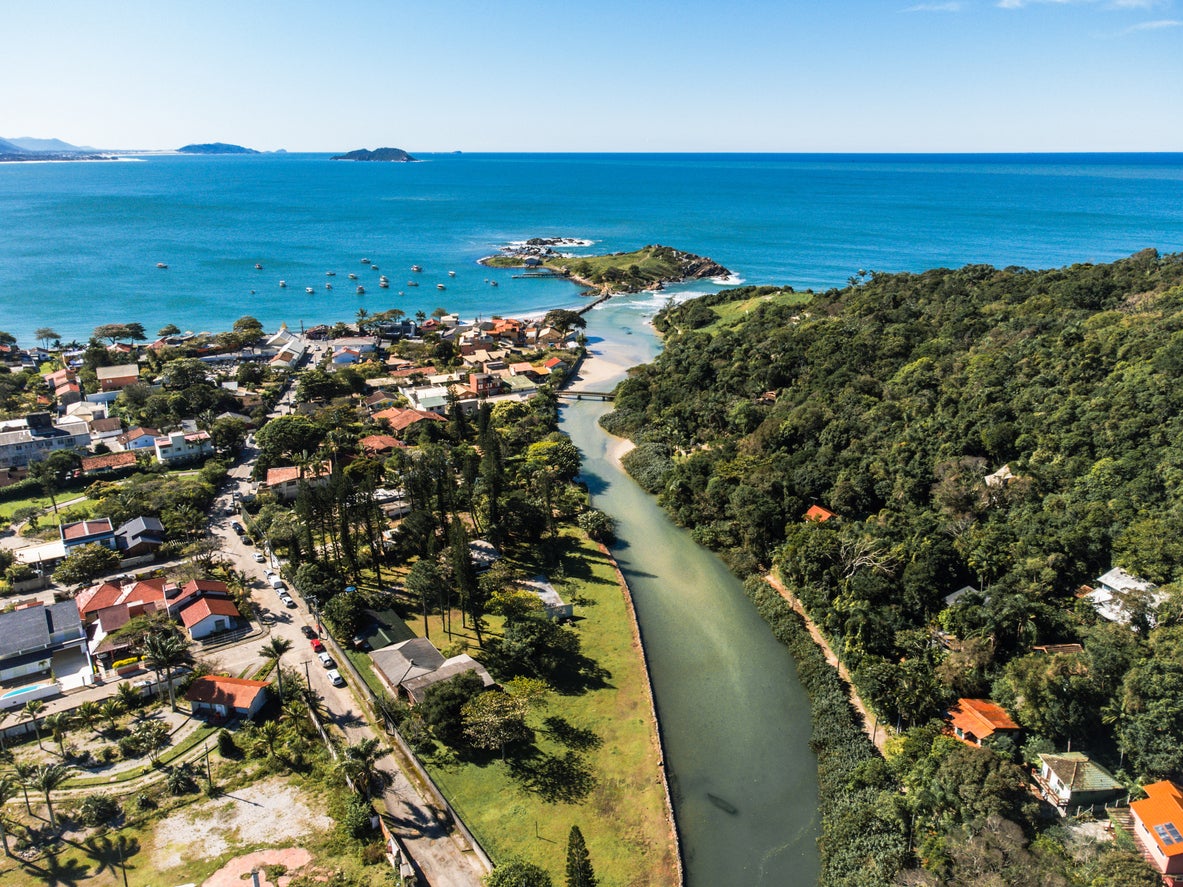
A city that is divided between the Brazilian mainland and the island of Santa Caterina, Florianopolis is a place where the setting welcomes relaxation and exploration. It lies on the coast in front of verdant hills, with the two different parts linked by the grandiose Hercilio Luz bridge, which is the longest suspension bridge in the country and one of the architectural highlights, along with the Metropolitan Cathedral.
The Santa Caterina history museum is one of the city’s only museums, with most people spending time wandering the city in areas like the Praca XV de Novembro. Many will spend the majority of their time relaxing exploring the surrounding natural beauty, from hikes around Spider Mountain to surfing and kicking back on beaches like Praia Mole, Lagoinha da Leste or Joaquina.
Where to stay
The LK Design Hotel stands out for its location and a fantastic outdoor pool area. It lies across the bridge in the central district, close to several attractions, and provides modern rooms with sweeping views over the coast.
Read our reviews of the best winter sun hotels
Join our commenting forum
Join thought-provoking conversations, follow other Independent readers and see their replies
Comments